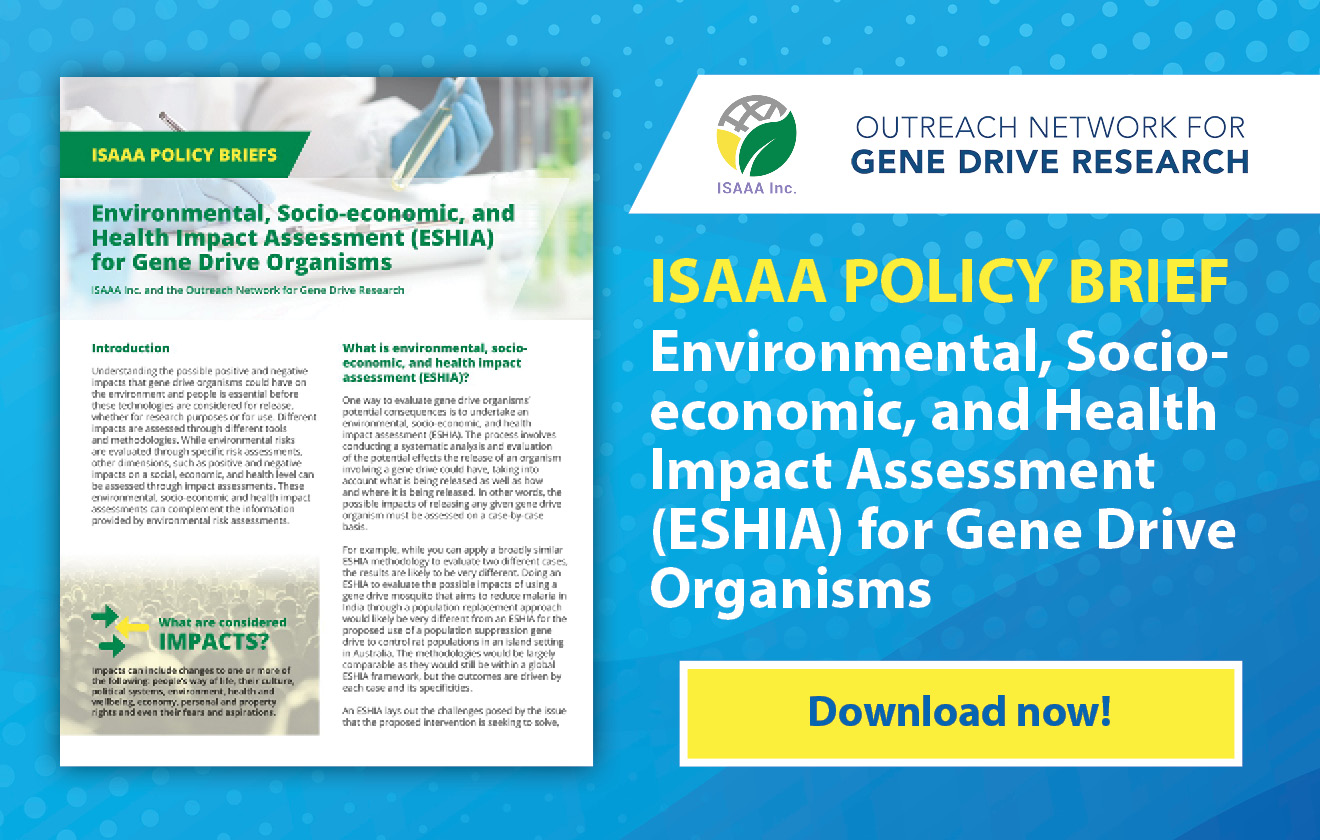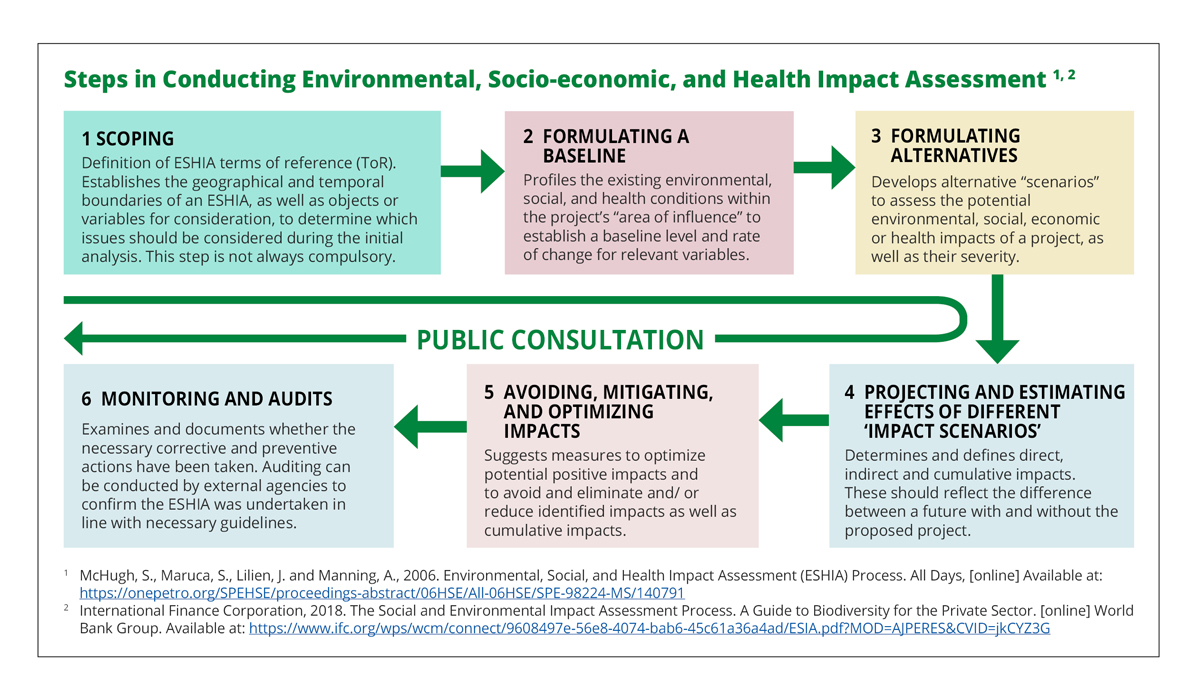ISAAA Policy Brief Tackles Importance of Environmental, Socio-economic, and Health Impact Assessment for Gene Drive Organisms
| |

ISAAA Inc., together with the Outreach Network for Gene Drive Research, launched a policy brief that tackles the importance of understanding the impacts that gene drive organisms could have on the environment and people. The policy brief, titled Environmental, Socio-economic, and Health Impact Assessment (ESHIA) for Gene Drive Organisms, is the second of a series that aims to present proposed policy options and impacts that address issues relating to gene drive technology.
Understanding possible positive and negative impacts that gene drive organisms could have on the environment and people are essential before these technologies could be released for research purposes or for use. Impacts are assessed through different tools and methodologies. While environmental risks are evaluated through specific risk assessments. Other dimensions, such as positive and negative impacts on social, economic, and health levels can be assessed through impact assessments. These environmental, socio-economic, and health impact assessments can complement the information provided by environmental risk assessments.
The following questions were answered in the second policy brief:
- What is environmental, socio-economic, and health impact assessment (ESHIA)?
- How is an ESHIA different from an environmental risk assessment (ERA)?
- How is an ESHIA undertaken?
What is environmental, socioeconomic, and health impact assessment (ESHIA)?
An ESHIA evaluates gene drive organisms’ potential consequences. The process involves conducting a systematic analysis and evaluation of the potential effects of the release of an organism involving a gene drive could have, taking into account what is being released, as well as how and where it is being released. The ESHIA assesses the impacts of gene drive organisms on a case-by-case basis.
How is an ESHIA different from an environmental risk assessment (ERA)?
ESHIA and ERA are complementary and undertaken separately using distinct methodologies. Both are project specific, but an ERA is focused only on the organism's potential harms and mitigations and its genetic insert in regard to the biosafety of the activities being undertaken (e.g., contained use or field trials). On the other hand, an ESHIA looks at the broader impacts of human or environmental activities, such as socio-economic dimensions, and considers both positive and negative impacts. ERAs are also a legal requirement in all countries that have a biosafety framework for the release of genetically modified (including gene drive) organisms but ESHIAs are not always required by regulatory authorities.
How is an ESHIA undertaken?
Defining the terms of reference (ToR) is the first step of an ESHIA. This includes both the thematic areas of potential impacts and the geographical and temporal scopes, where experts will define what exactly is being assessed and how that assessment will be undertaken, and determine the relevant aspects to investigate. The ToR are usually informed by public consultation and if the ESHIA is mandated by the national authorities, the ToR will be submitted to the appropriate national authorities for approval.

Policy recommendations for impact assessment for gene drive organisms
The policy brief has the following recommendations:
- ESHIA and ERA are complementary and both their findings should be considered in decision-making.
- ESHIA takes into account the positive and negative potential environmental, socio-economic, and health impacts of the technology, thus, strengthening the evidence base to inform governmental decision-making processes
- The public engagement required by an ESHIA enables public participation and information sharing with numerous stakeholder groups.
- Decisions regarding the release of gene drive technologies, whether for research or use, should consider the findings of ESHIA in addition to the findings of ERA and these assessments should be evidence-based and conducted on a case-by-case basis.
To read more, download the policy brief on the ISAAA Inc. website.
| Newer Post | Archive | Older Post |
Science Speaks is ISAAA Inc.'s official blog. Weekly blog articles, authored by ISAAA writers, partners, and invited contributors, aim to help share, disseminate, and promote scientific knowledge and its vital role in achieving global agricultural sustainability and development. Your support to Science Speaks will help us achieve this goal. You can help us by donating as little as $10.

